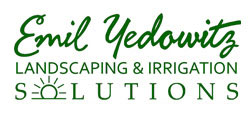If you are trying to diagnose problems in your grass, a lawn fungus may be the culprit. Three possibilities are mushrooms, fairy rings and snow molds.
Mushrooms
The most common fungi you will notice in the lawn are the capped mushrooms that are familiar to us. They especially like moist locations. Many of them are not harmful to your lawn; in fact, they can be quite helpful since they break down organic matter which can enrich your soil.
They can be problematic, though, if you are aiming for a uniformly green lawn. You can remove the visible mushrooms, but this will not remove the parts underground (called mycelium) and they may appear again, sometimes years later. Take care that you do not water your lawn too much as this can encourage mushrooms and other fungi to take hold.
Fairy Rings
Sometimes you come across circles or half circles of taller grass in your lawn. There may also be mushrooms growing in that circular pattern, and the grass inside may be turning brown. This phenomenon is known as a fairy ring, so named because some believed they marked the dancing spots enjoyed by these mythical creatures.
As the UC Davis IPM Program notes, you can usually improve the look of your lawn by fertilizing and irrigating the grass outside the rings more. The reason that the rings grow taller is from nutrients released from the mycelium that forms in a mat under the surface. Try aerating your soil to make it easier for water to reach the roots of the grass.
You may find that you need to remove any dead grass that is present (along with the fungal mycelium mat as much as possible) and reseed or lay sod.
Snow Mold
As the snow melts away in spring, white or pink patches may appear in your lawn. These are snow molds that have grown during the winter when the soil was wet. One way to help control this problem is to not fertilize at the end of fall since, as Cornell University mentions, this causes new growth that could fall prey to snow molds. If you have had a problem with them frequently, a preventative fungicide may be helpful in curbing the population.



